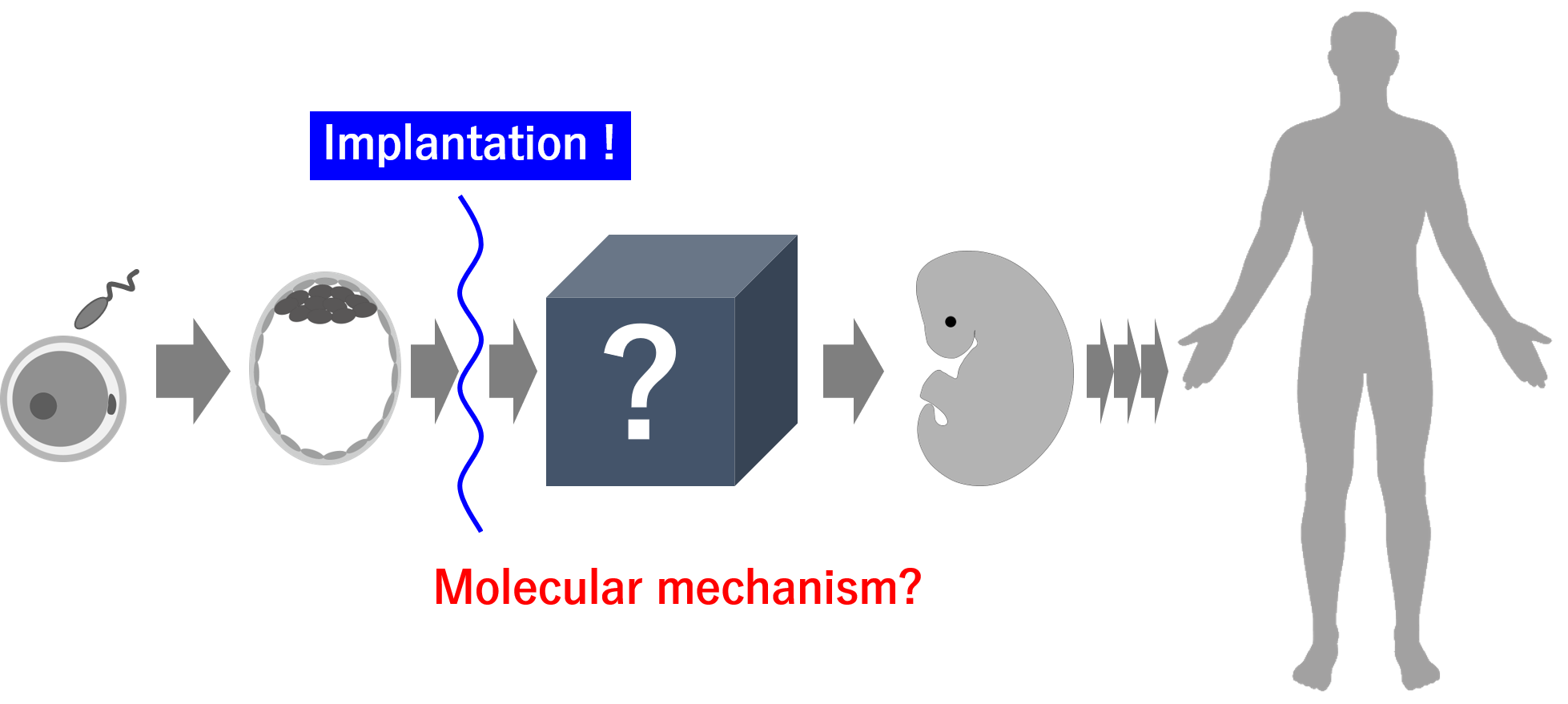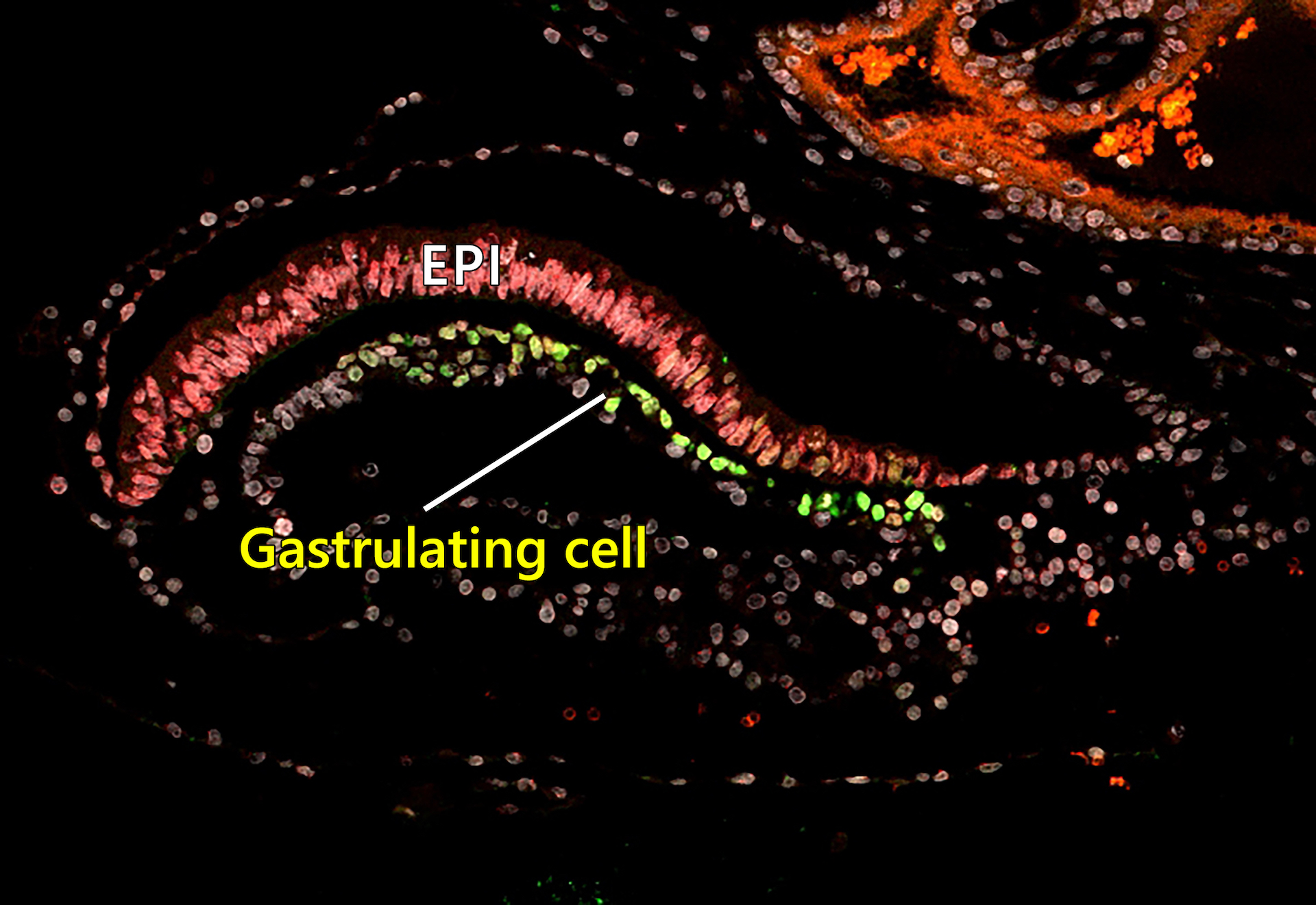
Tomonori Nakamura
Researcher (Saitou‑G/ HAKUBI Center)
- Position
- Associate Professor
- Research Field
- Developmental biology, Primatology
- Personal Website
- https://www.hakubi.kyoto-u.ac.jp/eng/mem/11th/member-11-8
Research Overview
Exploring mechanisms of primate post-implantation development using Non-human primate
Developmental biology is a field that explores the mechanism by which an individual organism is developed from a single fertilized egg (embryo). The stage immediately after implantation in humans is the period marking the beginning of gastrulation, the process by which the three germ layers (endoderm, mesoderm and ectoderm) are differentiated via dynamic morphological changes. This is the first event which generates a diversity of cells from a homogeneous pluripotent cell group, the epiblast. As such, this is an extremely fundamental period that can be regarded as the “origin of the individual”, as opposed to the “origin of life” initiated by fertilization. Nevertheless, due to some decisive obstacles, our knowledge remains limited to morphological findings from about 100 years ago. This means we do not know the precise mechanism of the origin of human development (Fig 1).

Fig 1
So far, I have studied the peri-implantation development of cynomolgus monkeys, who are the evolutionarily closest to humans among the organisms amenable to biological experiments. As a result, I have revealed many aspects unique to primates, including the developmental dynamics of the epiblast and the in vivo developmental counterpart of human/cynomolgus monkey ESCs/iPSCs (Fig 2, Nakamura et al, 2016, Nature).

Fig 2
In ASHBi, I will extend the previous research and elucidate the mechanisms of development during the gastrula stage of primates at the molecular level. In addition, I will also try to establish a new experimental foundation to finally overcome the hurdles to our knowledge in this area. It is my hope that these studies will help us deduce the mechanisms of the origin of human development.
Biography
B.S. Kyoto university, Japan, 2006 (Biology, Science)
M.S. Kyoto University, Japan, Japan, 2008 (Medical Science)
Ph.D. Kyoto University, Japan, Japan, 2011 (Medical Science)
Japan Society for the Promotion of Science for Young Scientists, DC2 (2009-2011)
Center for iPS Cell Research and Application, Kyoto University, Researcher (2011-2012)
Department of Anatomy and Cell biology, Graduate school of medicine, Kyoto University, Researcher (2012-2017)
Department of Anatomy and Cell biology, Graduate school of medicine, Kyoto University, Assistant Professor (2017-2020)
The HAKUBI Center for Advanced Research/Institute for the Advanced Study of Human Biology (ASHBi), Associate Professor (2021-Current)
Publications
Nakamura, T.#, Yabuta, Y., Okamoto, I., Sasaki, K., Iwatani, C., Tsuchiya, H., and Saitou, M#. (2017). Single-cell transcriptome of early embryos and cultured embryonic stem cells of cynomolgus monkeys. Sci Data 4, 170067.
Nakamura, T., Okamoto, I., Sasaki, K., Yabuta, Y., Iwatani, C., Tsuchiya, H., Seita, Y., Nakamura, S., Yamamoto, T., and Saitou, M. (2016). A developmental coordinate of pluripotency among mice, monkeys and humans. Nature 537, 57-62.
Sakai, Y.*, Nakamura, T.*#, Okamoto, I., Gyobu-Motani, S., Ohta, H., Yabuta, Y., Tsukiyama, T., Iwatani, C., Tsuchiya, H., Ema, M., et al. (2019). Induction of the Germ-Cell Fate from Pluripotent Stem Cells in Cynomolgus Monkeys. Biol Reprod.
Nakamura, T.*, Yabuta, Y.*, Okamoto, I., Aramaki, S., Yokobayashi, S., Kurimoto, K., Sekiguchi, K., Nakagawa, M., Yamamoto, T., and Saitou, M. (2015). SC3-seq: a method for highly parallel and quantitative measurement of single-cell gene expression. Nucleic Acids Res 43, e60.
Nakamura, T., Nakagawa, M., Ichisaka, T., Shiota, A., and Yamanaka, S. (2011). Essential roles of ECAT15-2/Dppa2 in functional lung development. Mol Cell Biol 31, 4366-4378.
Sasaki, K., Nakamura, T., Okamoto, I., Yabuta, Y., Iwatani, C., Tsuchiya, H., Seita, Y., Nakamura, S., Shiraki, N., Takakuwa, T., et al. (2016). The Germ Cell Fate of Cynomolgus Monkeys Is Specified in the Nascent Amnion. Dev Cell 39, 169-185.
Sasaki, K., Yokobayashi, S., Nakamura, T., Okamoto, I., Yabuta, Y., Kurimoto, K., Ohta, H., Moritoki, Y., Iwatani, C., Tsuchiya, H., et al. (2015). Robust In Vitro Induction of Human Germ Cell Fate from Pluripotent Stem Cells. Cell Stem Cell 17, 178-194.
Murase, Y., Yabuta, Y., Ohta, H., Yamashiro, C., Nakamura, T., Yamamoto, T., and Saitou, M. (2020). Long-term expansion with germline potential of human primordial germ cell-like cells in vitro. EMBO J, e104929.
Nagaoka, S.I., Nakaki, F., Miyauchi, H., Nosaka, Y., Ohta, H., Yabuta, Y., Kurimoto, K., Hayashi, K., Nakamura, T., Yamamoto, T., et al. (2020). ZGLP1 is a determinant for the oogenic fate in mice. Science 367.
Yamashiro, C., Sasaki, K., Yabuta, Y., Kojima, Y., Nakamura, T., Okamoto, I., Yokobayashi, S., Murase, Y., Ishikura, Y., Shirane, K., et al. (2018). Generation of human oogonia from induced pluripotent stem cells in vitro. Science 362, 356-360.
#Corresponding author(s)
*equally contributed to this work
Awards
iCeMS Future Award 2019,
Institute for Integrated Cell-Material Sciences (iCeMS), Kyoto University Institute for Advanced Study
Joined
Jan. 1, 2021
